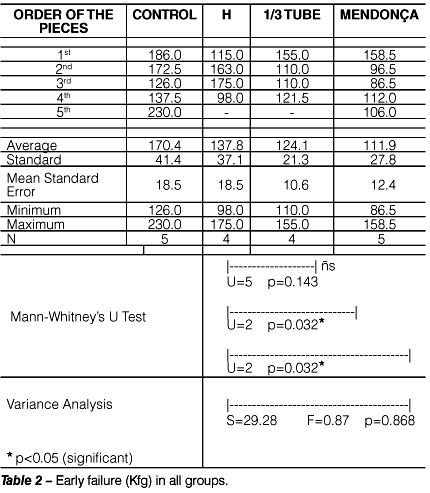In order to evaluate the stability of the anterior fixation with plate and screws, the author conducted an experimental study in segments of the cervical spine (C3-C7) in fresh human cadavers, comparing 3 different types of plates. He used a H-type Orozco's plate (4 specimens); a conventional plate of 1/3 tubular (4 specimens); plates described by Mendonça (5 specimens); and the control group without fixation (5 specimens). In all specimens a Corpectomy was used and the lateral walls of the vertebral bodies were left intact. The specimens were tested in axial compression machine, with slow and progressive loading, using mechanical graphic recorder. Results have shown that, concerning initial failure, stabilization of the fixations is similar among groups but inferior to the control group. Statistically, the difference was significant between the control group and the 1/3 tubular and Mendonça plates, but it was similar to the H plate. Concerning maximum resistance, no significant differences were observed in comparing fixations to the control group. Based on the results, the author concludes that fixation with the H plate offers better stability when compared to other fixations and that the plates and screws used in the study decreased resistance when compared to the control group.
Spinal injuries; Fracture fixation, internal; Bone plates; Bone screws; Cadaver






